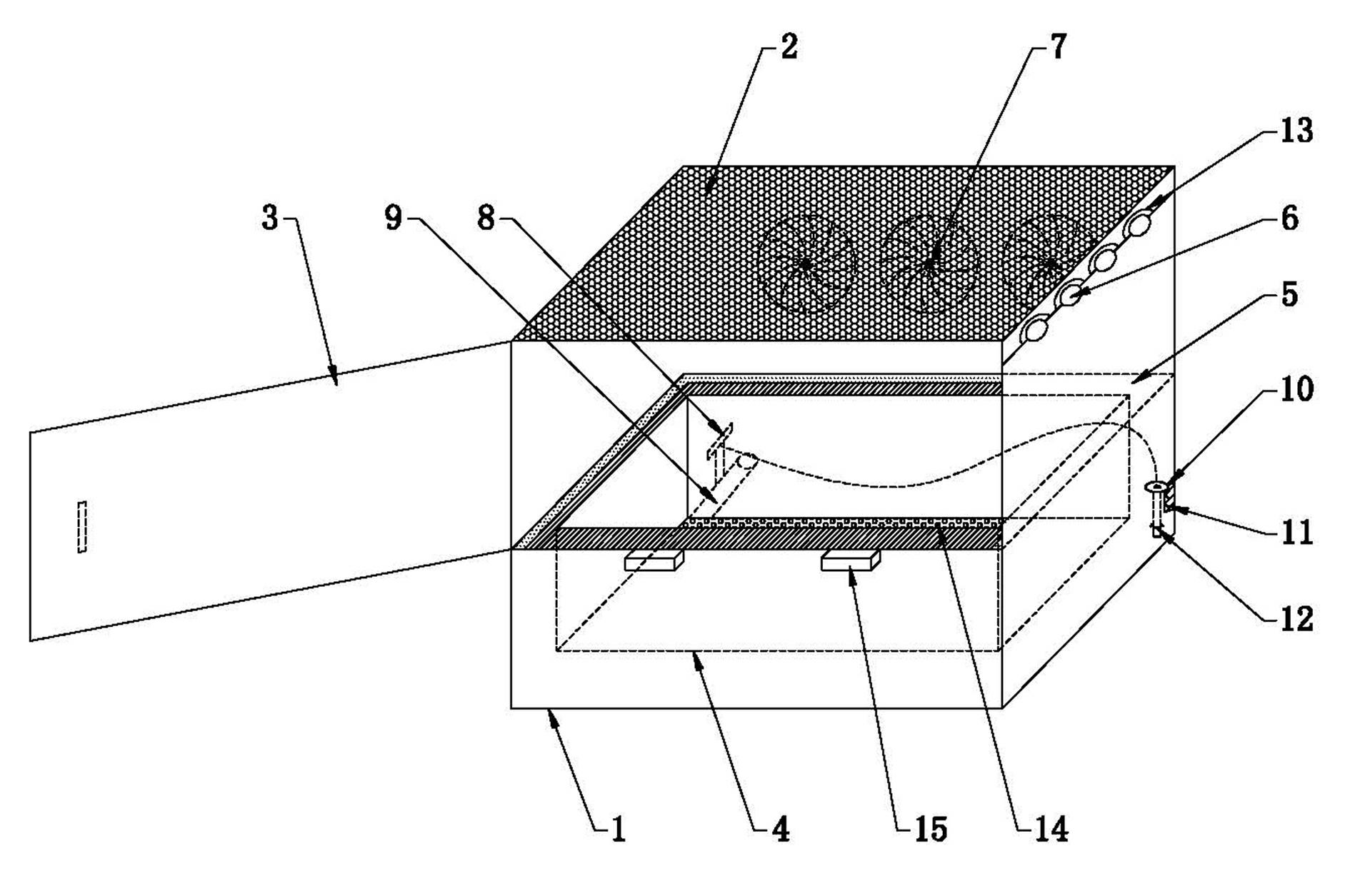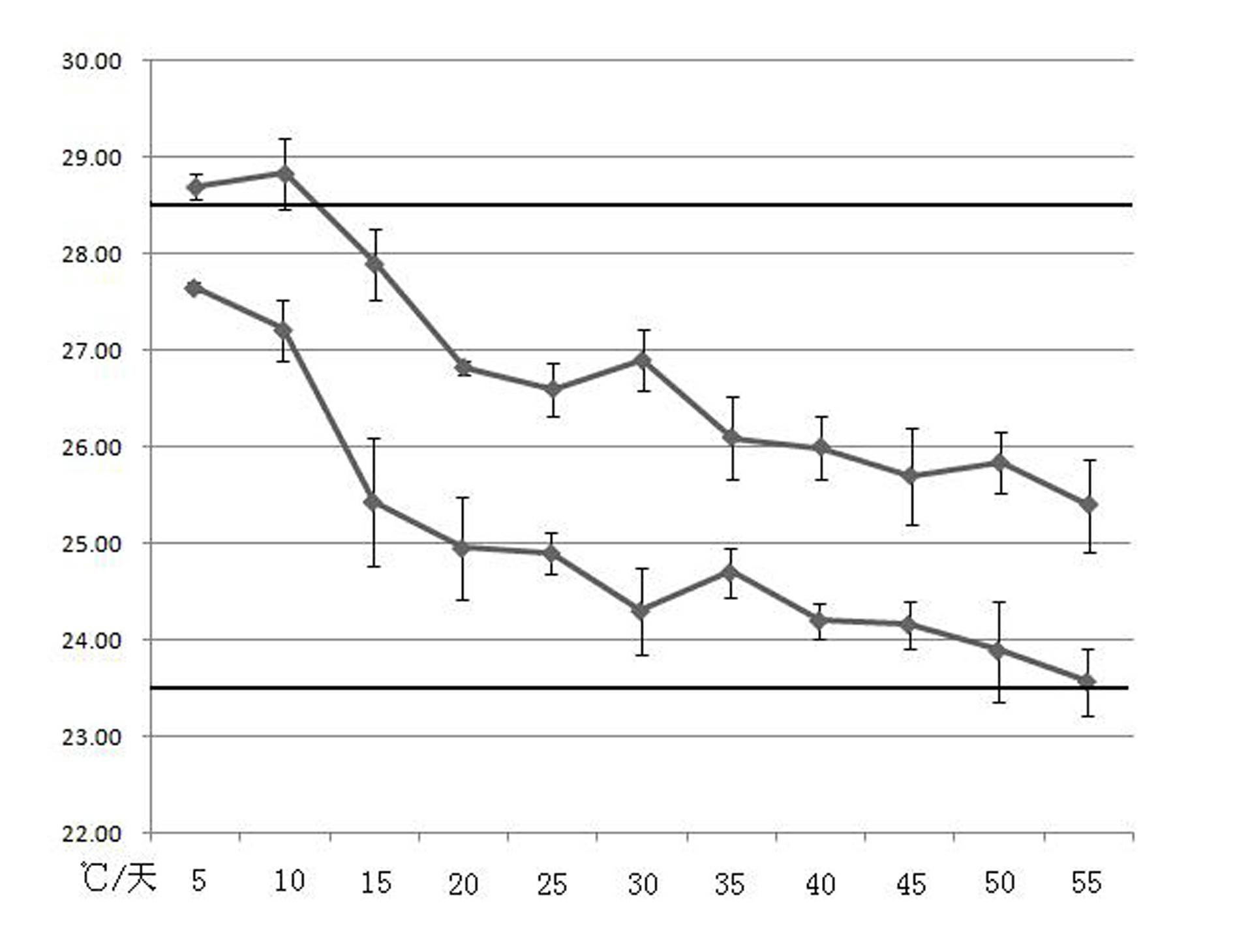Crop and insect co-cultivation box
A technology of co-incubators and insects, applied in biological scientific research and agricultural fields, can solve the problems of lack of identification platform for insect resistance and disease resistance of crops, and achieve the effects of reducing large-scale feeding, good light and ventilation performance, and wide application range.
- Summary
- Abstract
- Description
- Claims
- Application Information
AI Technical Summary
Problems solved by technology
Method used
Image
Examples
Embodiment 1
[0031] In the rearing room equipped with a constant temperature air-conditioner, adopt the same number and power of illumination devices to move rice seedlings and striatellus in the same state into the beaker and the co-cultivation box of the present invention respectively. The light intensity in the co-incubation box of the invention is measured by an illuminometer, and the measured light intensity results are shown in Table 1. It can be seen from Table 1 that the average light intensity in the beaker is very low, with an average of only 195 μmol m -2 ·s -1 , the illuminance is about 14295 lux (under the condition of ordinary fluorescent lamp, 1μmol·m -2 ·s -1 ≈73.30Lux), while under the same conditions, the average light intensity under the indoor beaker culture rack is 287.5μmol·m -2 ·s -1 , the illuminance is about 21076lux, and the reason for the loss of light is that the gauze at the mouth of the beaker prevents insects from escaping. Because the light saturation p...
Embodiment 2
[0035] BPH is a temperate insect with strong low temperature tolerance, but poor adaptability to high temperature. The optimum growth temperature is between 23.5-28°C, and the optimum temperature is 25°C. In the range of 15-25°C, the growth rate of eggs and nymphs will accelerate with the increase of temperature. When the daily average temperature exceeds 29°C or reaches an extreme high temperature of 35°C, the growth cycle of nymphs will be prolonged, stunted or even dead. In the rearing room equipped with a constant temperature air conditioner, sow Wuyujing No. 3 respectively in beakers and the co-cultivation box of the present invention, and transfer into 1-2 instar SBPH nymphs after 5 days of sowing, and the beaker, the co-cultivation box of the present invention are treated every day. The temperature in the incubator and the indoor ambient temperature are measured, wherein the indoor temperature fluctuates up and down at 25°C. For studying the environmental characteristics...
Embodiment 3
[0037] In the rearing room where the constant temperature air-conditioning is installed, rice seedlings and SBPH in the same state are moved into the beaker and the co-cultivation box of the present invention respectively, and the indoor environment, the beaker cultivation method and the humidity in the co-cultivation box are measured, and the result It was found that the humidity in the beaker was consistent with the humidity in the constant temperature room environment, and the humidity range in the constant temperature room was 64%-83% within the measurement time. Cultivation of SBPH is easily disturbed by season and climate. And the relative humidity in the co-incubation box of the present invention is found through measurement, the humidity in the device is stable in the scope of 78%-81%, is little affected by the external environment, and can play a larger buffering effect on the external environment; At the same time, because the optimum humidity for the growth of SBPH ...
PUM
 Login to View More
Login to View More Abstract
Description
Claims
Application Information
 Login to View More
Login to View More - R&D
- Intellectual Property
- Life Sciences
- Materials
- Tech Scout
- Unparalleled Data Quality
- Higher Quality Content
- 60% Fewer Hallucinations
Browse by: Latest US Patents, China's latest patents, Technical Efficacy Thesaurus, Application Domain, Technology Topic, Popular Technical Reports.
© 2025 PatSnap. All rights reserved.Legal|Privacy policy|Modern Slavery Act Transparency Statement|Sitemap|About US| Contact US: help@patsnap.com



